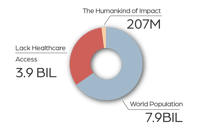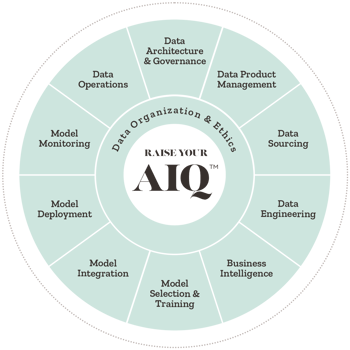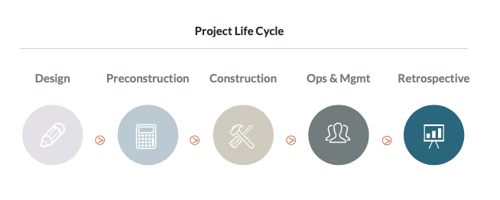BETTER Customer Review Sentiment Analysis: A Business Case for N-grams
Sentiment analysis is a useful tool for organizations aiming to understand customer preferences, gauge public...
for the health of people

for the health of planet

for the health of business

|
FOR THE HEALTH OF PEOPLE: EQUITY
|
 |
|
“The work [with Synaptiq] is unprecedented in its scale and potential impact,” Mortenson Center’s Managing Director Laura MacDonald MacDonald said. “It ties together our center’s strengths in impact evaluation and sensor deployment to generate evidence that informs development tools, policy, and practice.”
|
| Read the Case Study ⇢ |
|
DATA STRATEGY
|
 |
|
A startup in digital health trained a risk model to open up a robust, precise, and scalable processing pipeline so providers could move faster, and patients could move with confidence after spinal surgery.
|
| Read the Case Study ⇢ |
|
PREDICTIVE ANALYTICS
|
 |
|
Thwart errors, relieve in-take form exhaustion, and build a more accurate data picture for patients in chronic pain? Those who prefer the natural albeit comprehensive path to health and wellness said: sign me up.
|
| Read the Case Study ⇢ |
|
MACHINE VISION
|
 |
|
Using a dynamic machine vision solution for detecting plaques in the carotid artery and providing care teams with rapid answers, saves lives with early disease detection and monitoring.
|
| Read the Case Study ⇢ |
|
INTELLIGENT AUTOMATION
|
-1.jpg?width=296&height=196&name=man-wong-aSERflF331A-unsplash%20(1)-1.jpg) |
|
This global law firm needed to be fast, adaptive, and provide unrivaled client service under pressure, intelligent automation did just that plus it made time for what matters most: meaningful human interactions.
|
| Read the Case Study ⇢ |
 |
|
Mushrooms, Goats, and Machine Learning: What do they all have in common? You may never know unless you get started exploring the fundamentals of Machine Learning with Dr. Tim Oates, Synaptiq's Chief Data Scientist. You can read and visualize his new book in Python, tinker with inputs, and practice machine learning techniques for free. |
| Start Chapter 1 Now ⇢ |

By: Synaptiq 1 Nov 15, 2021 11:16:26 AM

Technology is moving rapidly in the construction industry and is touching all areas of the ecosystem. From the digital transformation of the design process to new preconstruction estimation software, scheduling, predictive analytics, and asset management, new construction technology companies and startups are shaking up the industry at an exciting pace. With these new technologies and industry-wide digital transformation comes data – and lots of it.
And with lots of data, opportunities for AI emerge across the entire project lifecycle:

In this article, we will provide an overview of the field of artificial intelligence as well as examples of AI use-cases top construction firms are currently pursuing in 2021.
Artificial intelligence (AI) leverages computers and machines to mimic the problem-solving and decision-making capabilities of the human mind. It is a field that combines computer science, domain understanding, and robust datasets to enable automated predictions and problem-solving.
Today, a lot of hype surrounds AI, especially as to how it relates to applications in industry – whether it is in construction, healthcare, or manufacturing. There is significant enthusiasm for its potential for impact across every sector, and right now construction leaders are at the forefront of imagining “what is possible.”
As these discussions about imagining the possibilities for AI are occurring, there are also critical questions industry leaders and data scientists are asking regarding ethical considerations as well, ranging from privacy concerns to building systems that benefit society as a whole.
Within the AI space and applications for construction, three areas, in particular, are emerging as critically important to solving the industry’s biggest challenges: Data Strategy, Machine Vision, and Intelligent Document Processing.
Data Strategy is vital to every organization as it helps identify highly valuable data and connects this data to fulfilling the core objectives of the company. This enables business leaders to manage data more like valuable assets – than byproducts of business activity – and it drives competitive advantage.
Data strategy is based on two dimensions: 1) Core business strategy, including goals and objectives; 2) The state of the business’ data assets. By understanding 1 and 2, a firm can devise a future state (“what success looks like”) and a roadmap for how to get there. Here are some examples of data strategy in action.
Machine Vision is the capability of a computer to visually perceive the environment. Immense amounts of images and video data are too time-consuming for humans to process. Machine vision leverages the latest technologies and methods to inspect and analyze visual data so it can be used in inquiries and controls, processes, and other applications reliant on accurate “sight.” This includes object detection, object tracking, and activity tracking in both real-time and retrospective capacities, for a variety of purposes, including the following: project management, scheduling, health & safety, audit & compliance, and more. Learn more about machine vision here.
Intelligent Document Processing (IDP) is a new AI-driven approach to automating the categorization of documents, extracting data from documents, and creating documents. IDP is used to turn data from these documents, including unstructured data (text, video, images, and more) into a structured format for rapid and accurate processing and information retrieval and vice versa. An IDP model is tailored to the unique environment and document-handling needs of a particular organization. IDP is actively applied in healthcare, financial services, insurance, supply chain, and legal industries today and has enormous potential for applications across the entire construction industry.
In general, AI is best for addressing the following kinds of business challenges:
Automating repetitive tasks;
Generating useful insights from large volumes of data;
Predicting outcomes; and
Optimizing processes.
Industry leaders are emerging from the COVID-19 pandemic focused on innovating faster and responding better to future challenges. They are leveraging existing tools, site camera data, and applying analytics to optimize productivity, maximize profits, and ensure health and safety compliance.
Essential to any successful AI project in construction is having a robust dataset. With data, opportunities emerge – from design management to preconstruction, prefabrication, construction, resource and equipment management, operations, scheduling and staffing, health and safety compliance, and project retrospectives.
IDP is particularly useful for construction companies managing a large volume of documents such as invoices, change orders, blueprints, contracts, and client correspondence, which cannot be fully processed by existing software. One immediate use-case for IDP in construction companies is to respond to the dramatic fluctuations in the cost of wood, and handling the massive amounts of documents that result.

Synaptiq is an AI and data science consultancy based in Portland, Oregon. We collaborate with our clients to develop human-centered products and solutions. We uphold a strong commitment to ethics and innovation.
Contact us if you have a problem to solve, a process to refine, or a question to ask.
You can learn more about our story through our past projects, blog, or podcast.
Sentiment analysis is a useful tool for organizations aiming to understand customer preferences, gauge public...
February 28, 2024
In the ever-evolving landscape of technology, innovation and experimentation are key drivers of success. However, the...
February 23, 2024
Sentiment analysis is a must-have for organizations with a business-to-consumer (B2C) business model. This natural...
February 15, 2024